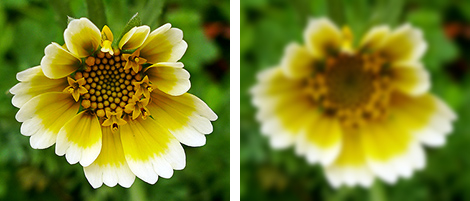
When you decide to photograph a particular subject, how many shots do you usually take? Do you just hit the shutter once and move on? Or, do you take a lot of shots, and perhaps change your camera settings in the process?
Well, regardless of what your subject is, you should always take lots and lots of photos. This may not seem obvious for all subjects, so here’s a breakdown:
Macro
If you’ve ever tried taking macro shots, then you definitely know how difficult it is to focus at such a close distance. Just one little movement of the camera or the subject can dramatically throw off your focus. It’s impossible to anticipate these subtle movements, so always take lots of photos when shooting macro to ensure you capture the subject in between these movements.
Wildlife
Okay, this one should be obvious. When photographing uncontrollable and moving subjects, it’s important to take lots and lots of photos because you never know when they’re going to stand still for a second, when they’re going to stand in that perfect pose, or when you’ll successfully “freeze” their action (for every 100 shots I take of a moving subject, I usually get just one sharp photo).
Landscape
With a stationary subject like a landscape, you may be wondering why you should still take lots of photos. Well, here are a couple reasons:
(1) If you’re shooting during sunrise or sunset, then you’ll notice how quickly the light changes (in seconds). It’s impossible to anticipate when the most magical light will occur, so take lots of photos to ensure you capture it!
(2) There may be movement in the scene that you don’t notice (like a tree being blown by the wind), and you don’t want any blurry objects in your photo, so take lots of photos to ensure you capture a still scene.
Wildflowers
Wildflowers are gentle–very gentle. The slightest breeze can send the flower shaking through the air, resulting in a blurry photograph. The key is to shoot the flower when it’s completely still, but this only happens for split seconds, so it’s impossible to anticipate. Take a lot of photos to ensure you capture the flower in between these movements.
Try changing your camera settings too
If you’ve just started getting into photography, one of the best ways to learn about your camera is to experiment with different settings. Just remember to change one at a time, so you can track the effectiveness of each change.
Even if you’re not a beginner, I’d still recommend taking multiple shots with slightly different f-stops and different exposures, because even with the LCD preview and histogram, it’s impossible to determine if you got everything right with the photo.
Taking lots of photos with slightly different settings will prevent you from saying later on, “if only I would have used f/16 instead of f/11.?”
Does this mean you should change every setting possible in between photos? Of course not! I usually just take each photo at a couple different f-stops and two or three different exposures.
And, if you’re handholding your camera…
Then you really need to take a lot of photos. So far, I’ve only mentioned movement of the subject, but your hands also cause a lot of movement. The goal is to get a shot when both your hands and the subject are perfectly still. Taking lots of shots (repeatedly) will help increase your chances.
Get more great tips in our free weekly newsletter
The photograph at the beginning of this article was taken by Cliff Hutson, and is used under the Creative Commons Attribution 2.0 license.
I enjoy your articles very much. I find them very timely because I teach a photography class. It’s always nice for me to have a refresher course prior to my teaching of the class. Thank you for what you do.
In appreciation,
Rex Winterton
This is something I have always done & it has served me well for all the reasons you have mentioned, the other reason why I end up taking about 400+ photo’s in a 2 hour session is, because I find it meditative, macro is magic & it draws me into the flower, into another world.
I love your site & I have learnt something on every page, thank you so much